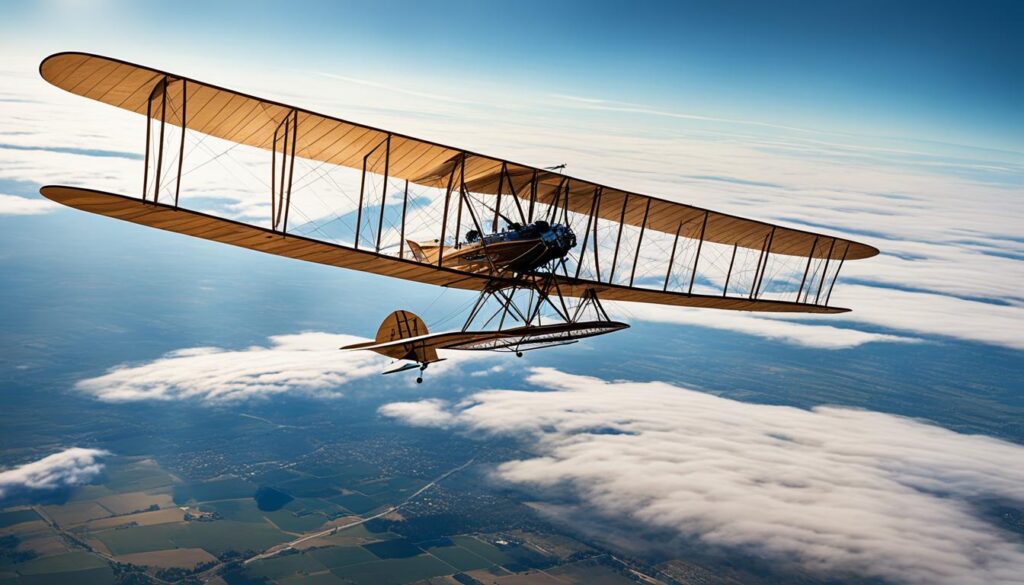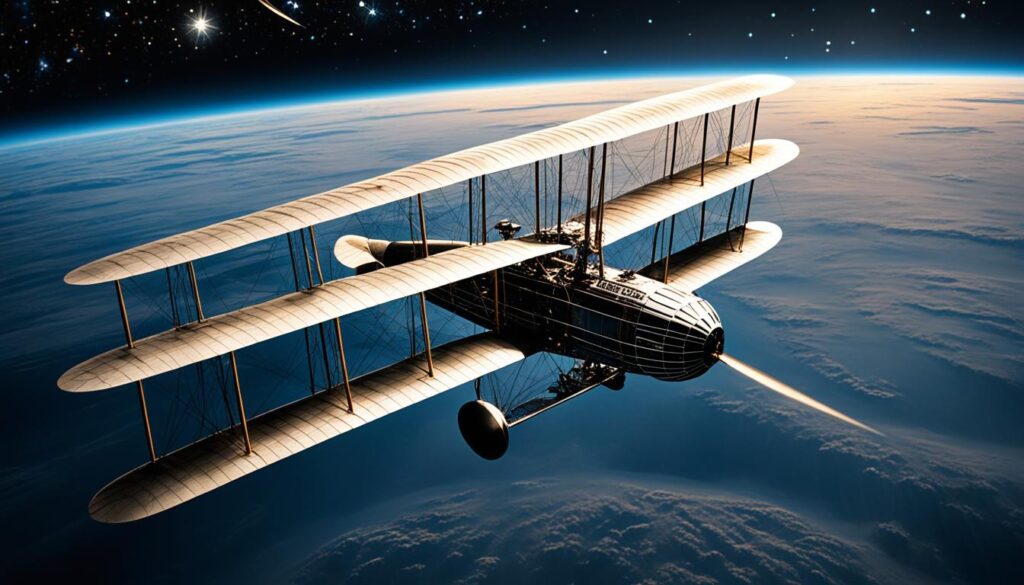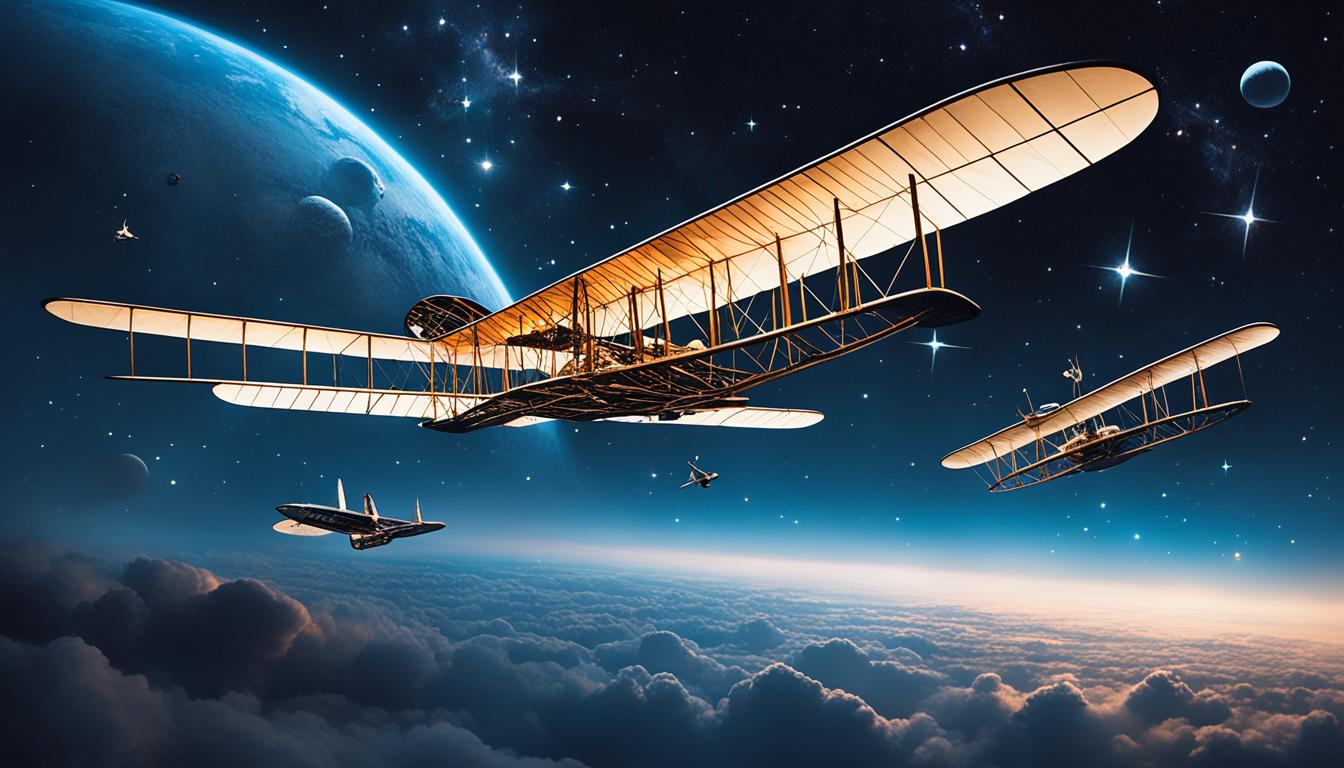The Wright Flyer, a symbol of human ingenuity, has soared beyond its earthly beginnings. Bits of this groundbreaking aircraft have embarked on incredible journeys to space. From the Moon to Mars, these fragments carry the pioneering spirit of the Wright brothers into the cosmos.
In 1969, Neil Armstrong took a piece of the Wright Flyer to the Moon during the Apollo 11 mission. This act linked the first powered flight with humanity’s first steps on another world. More recently, a scrap of fabric from the original plane hitched a ride to Mars on the Ingenuity helicopter, which has completed dozens of flights on the Red Planet.
These space voyages of Wright Flyer remnants bridge the gap between early aviation and modern space exploration. They remind us of our ongoing drive to push boundaries and explore new frontiers in aerospace.
Key Takeaways
- Fragments of the Wright Flyer have traveled to both the Moon and Mars
- Neil Armstrong carried Wright Flyer pieces on Apollo 11
- The Mars helicopter Ingenuity includes fabric from the original plane
- These journeys connect early aviation to current space exploration
- The Wright Flyer continues to inspire aerospace innovation
The Wright Flyer: Pioneering Aviation History

On December 17, 1903, the Wright brothers made history. Their aircraft, the Wright Flyer, flew for the first time at Kitty Hawk, North Carolina. This flight was the first to be sustained and controlled, powered by an engine.
The Wright brothers spent four years researching and developing their aircraft. They used a lightweight aluminum engine block in their design. Their work brought new techniques to aeronautical engineering, like wind tunnel and flight testing.
The Wright Flyer shows what humans can achieve with hard work and creativity. Now, it’s at the Smithsonian National Air and Space Museum in Washington, DC. It inspires many with its groundbreaking design and the Wright brothers’ spirit.
Wright Flyer in Space: From Kitty Hawk to the Cosmos
The Wright Flyer’s journey from Kitty Hawk to space shows how far we’ve come in aerospace innovation. In 1969, Neil Armstrong took parts of the original Flyer to the Moon with him on the Apollo 11 mission. This act linked early flying to space travel, showing the Wright brothers’ big impact.

NASA’s X-Plane program keeps pushing flight limits, inspired by the Wright brothers. It works on new aircraft designs, changing what’s possible in aerospace tech. These new technologies are built on the Wright Flyer’s ideas from over a hundred years ago.
In 2020, a small piece of the Wright Flyer went to Mars with the Ingenuity helicopter. This piece of fabric has seen flights on another planet, going beyond its original goal. The story of these Wright Flyer parts shows how old ideas still drive new space exploration.
Pushing Boundaries: The Wright Brothers’ Enduring Impact on Aerospace Innovation
The Wright brothers’ spirit of pushing boundaries lives on in today’s aerospace industry. They used wind tunnel tests and careful trials to solve problems. This method is still key in designing aircraft today, even influencing spacecraft design.
Experimental aircraft keep evolving, thanks to the Wright brothers. From their first 12-second flight to today’s advanced planes, their legacy lives on. The Mars helicopter Ingenuity, with 67 flights, shows how far we’ve come in exploring the skies.
Space exploration milestones often remember the Wright Flyer. Bringing parts of this historic plane to space connects early flight to today’s space missions. It’s a symbol of human progress, linking our past achievements to the future. The Wright brothers’ work started a journey that now reaches beyond Earth’s atmosphere.
Today’s aerospace innovations keep the spirit of discovery alive. As we push the limits of flight and exploration, we honor the Wright brothers. From Kitty Hawk to Mars, the journey of flight continues to grow.

Leave a Reply